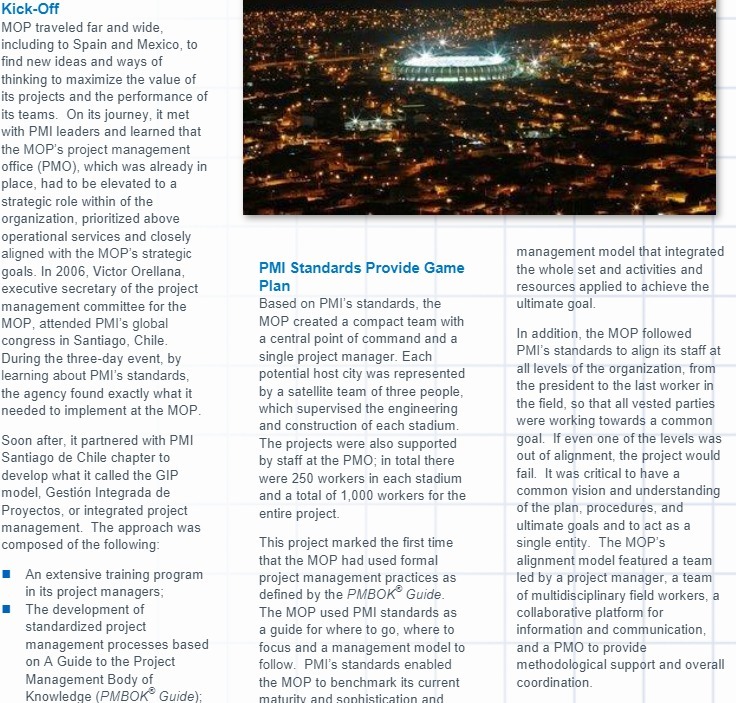Kick-Off MOP traveled far and wide. including to Spain and Mexico, to nd new ideas and ways of thinking to maximize the value of its projects and the performance of itsteams. On its journey. it met with PMI leaders and learned that the MOP's project management ofce {PMO}, which was already in place. had to be elevated to a strategic role within of the organization. prioritized above operational services and closely aligned with the MOP's strategic goals. In EUDE, 'v'ictor Orellana. executive secretary of the project rn anagement committee for the MOP, attended PMl's global congress in Santiago. IOhile. During the threeday event. by learning about PMI's standards. the agency found exactly what it needed to implement at the MOP. Soon after. it partnered with PMI Santiago de lChile chapter to develop what it called the lOIP model, lQuestion lntegrada de Proyectos, or integrated project management. The approach was com posed of the following: I An extensive training program in its project managers: l The development of standardized project management processes based on A Guide to the Project Management Body of Knowledge {PMBOKE Guide]; PMI Standards Provide Game Plan Based on PMl's standards. the MOP created a compact team with a central point of command and a single project manager. Each potential host city was represented by a satellite team of three people. which supervised the engineering and construction of each stadium. The projects were also supported by staff at the PMO; in total there were 250 workers in each stadium and a total of 1,[|It't workers for the entire project. This project marked the rst time that the MOP had used formal project management practices as dened by the sweets8 Guide. The MOP used PMI standards as a guide for where to go. where to focus and a management model to follow. PM|:s standards enabled the MOP to benchmark its current maturity and sonhisficatien and management model that integrated the whole set and activities and resources applied to achieve the ultimate goal. In addition. the MOP followed PMl's standards to align its staff at all levels of the organization, from the president to the last worker in the eld. so that all vested parties were working towards a common goal. If even one ofthe levels was out of alignment. the project would fail. it was critical to have a common vision and understanding of the plan. procedures, and ultimate goals and to act as a single entity. The MOP's alignment model featured a team led by a project manager. a team of multidisciplinary eld workers. a collaborative platform for information and communication, and a PMO to provide methodological support and overall coordination







